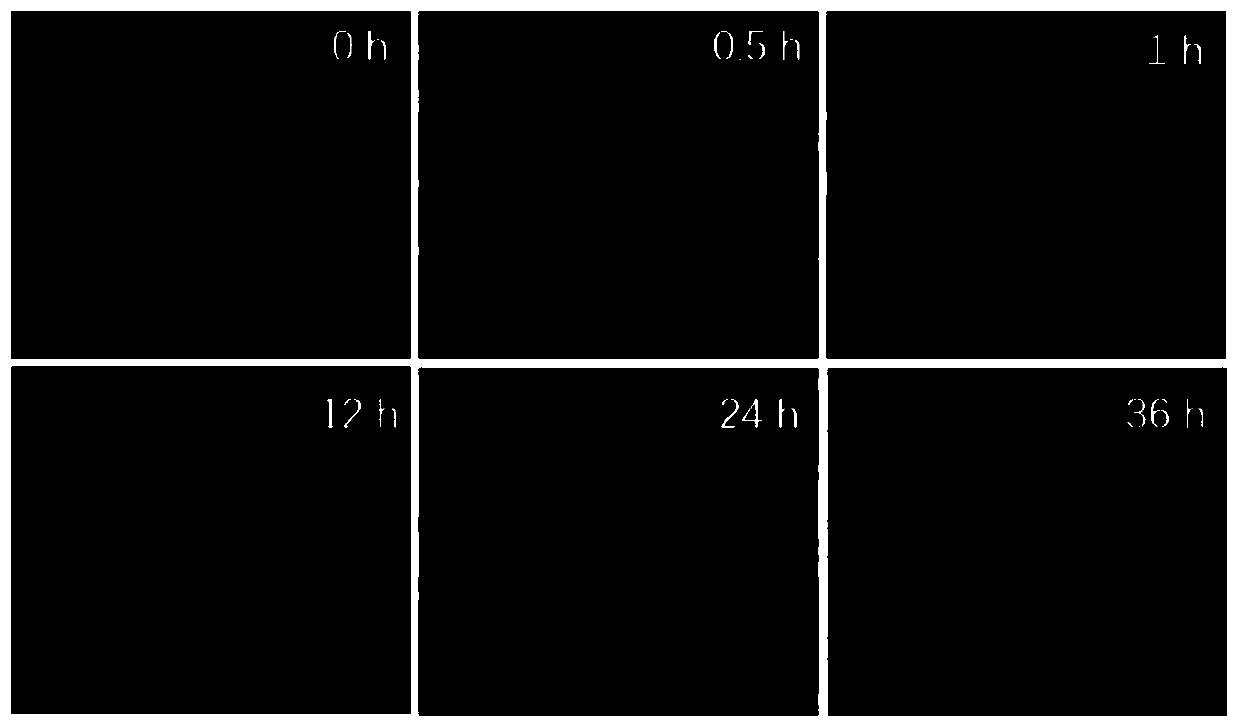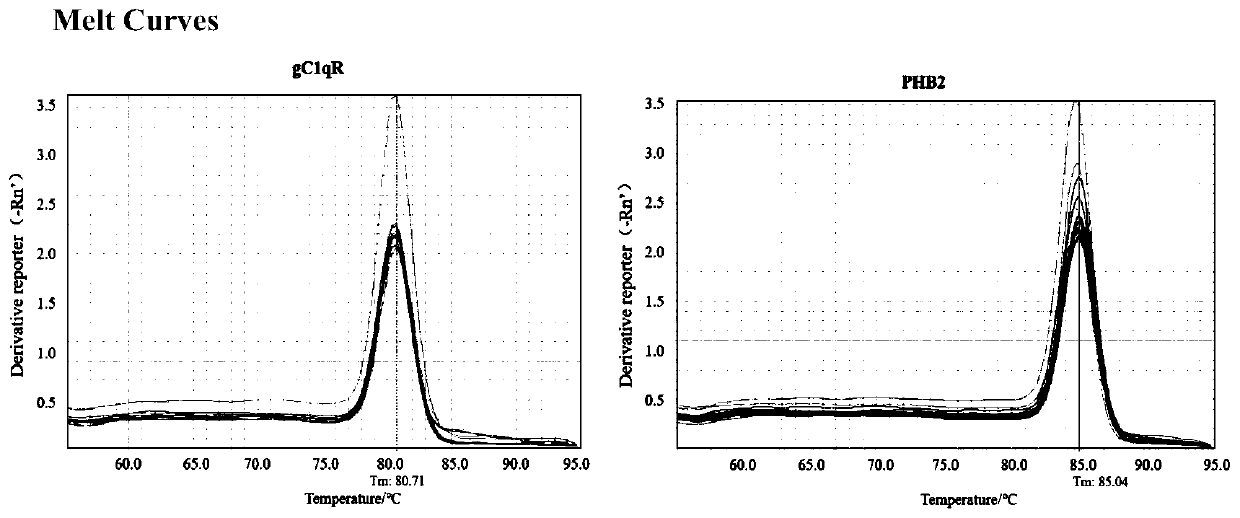Application of PHB2 gene or protein inhibitor in preparation of anti-porcine circovirus type 2 drugs
A porcine circovirus and inhibitor technology, applied in antiviral agents, applications, genetic engineering and other directions, can solve the problems of few research reports, the interaction network between PCV2 infection and host cells is not very clear, and achieve the effect of inhibiting replication
- Summary
- Abstract
- Description
- Claims
- Application Information
AI Technical Summary
Problems solved by technology
Method used
Image
Examples
Embodiment 1
[0055] 1.1 PCV2d infection of PK-15 cells
[0056] PK-15 cells without PCV1 / PCV2 contamination were seeded in 6-well cell culture plates, and the cells were cultured in DMEM medium containing 10% NBCS (newborn calf serum) until the cell fusion rate was 60%. Use TCID50=1×10 5.66 After the PK-15 cells were infected with PCV2d / mL, the cells in each well were collected at 3, 6, 12, 24 and 48 hours respectively, as the experimental group; the cells without any treatment were marked as 0h, as the control group, and each time point was set 3 duplicate holes.
[0057] 1.2 Detection of PCV2 proliferation in PK-15 cells by indirect immunofluorescence
[0058] After infecting PK-15 cells with PCV2d using the above method, the cells were fixed with 4% paraformaldehyde for 20 min at 0.5, 1, 12, 24 and 36 h, respectively, and then the cells were permeabilized with PBS containing 0.1% Triton X-100 for 10 min. After washing with PBS three times, block in PBS containing 3% BSA (bovine serum...
Embodiment 2
[0075] PK-15 cells were grown into a monolayer and transfected with an RNA interference fragment targeting the PHB2 gene. The interference fragment is PHB2siRNA-1, and the target sequence of PHB2siRNA-1 is shown in SEQ ID NO: 1, which was transfected into PK-15 cells. qPCR was used to detect the RNA interference efficiency of PHB2 gene. After 24 hours of transfection, discard the medium, wash with PBS 3 times, infect the cells with PCV2 for 1 hour, discard the medium, wash 3 times with PBS, replace with fresh medium and continue culturing for 48 hours. After the cells were lysed to calculate the protein concentration, β-actin was used as an internal reference, anti-β-actin (mouse) and rabbit-derived polyclonal antibodies against PCV2Cap were respectively used as primary antibodies, and corresponding HRP-labeled anti-mouse and anti-rabbit antibodies were used As a secondary antibody, a Western blot test was performed to detect changes in PCV2Cap protein.
Embodiment 3
[0077] PK-15 cells were grown into a monolayer and transfected with an RNA interference fragment targeting the PHB2 gene. The interference fragment is PHB2siRNA-2, and the target sequence of PHB2siRNA-2 is shown in SEQ ID NO: 2, which was transfected into PK-15 cells. qPCR was used to detect the RNA interference efficiency of PHB2 gene. After 24 hours of transfection, discard the medium, wash with PBS 3 times, infect the cells with PCV2 for 1 hour, discard the medium, wash 3 times with PBS, replace with fresh medium and continue culturing for 48 hours. After the cells were lysed to calculate the protein concentration, β-actin was used as an internal reference, anti-β-actin (mouse) and rabbit-derived polyclonal antibodies against PCV2Cap were respectively used as primary antibodies, and corresponding HRP-labeled anti-mouse and anti-rabbit antibodies were used As a secondary antibody, a Western blot test was performed to detect changes in PCV2Cap protein. And adopt IFA test me...
PUM
 Login to View More
Login to View More Abstract
Description
Claims
Application Information
 Login to View More
Login to View More - R&D Engineer
- R&D Manager
- IP Professional
- Industry Leading Data Capabilities
- Powerful AI technology
- Patent DNA Extraction
Browse by: Latest US Patents, China's latest patents, Technical Efficacy Thesaurus, Application Domain, Technology Topic, Popular Technical Reports.
© 2024 PatSnap. All rights reserved.Legal|Privacy policy|Modern Slavery Act Transparency Statement|Sitemap|About US| Contact US: help@patsnap.com










